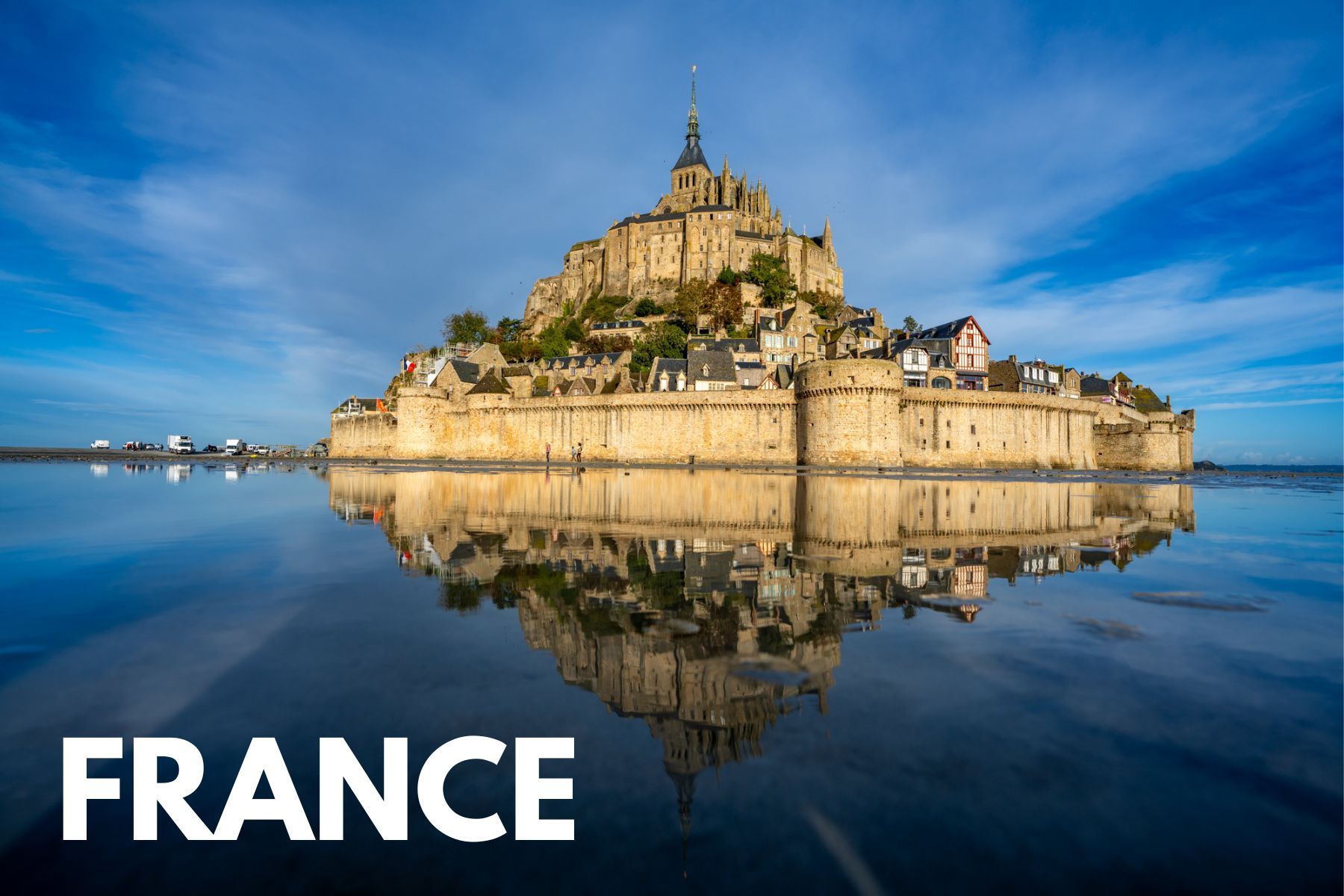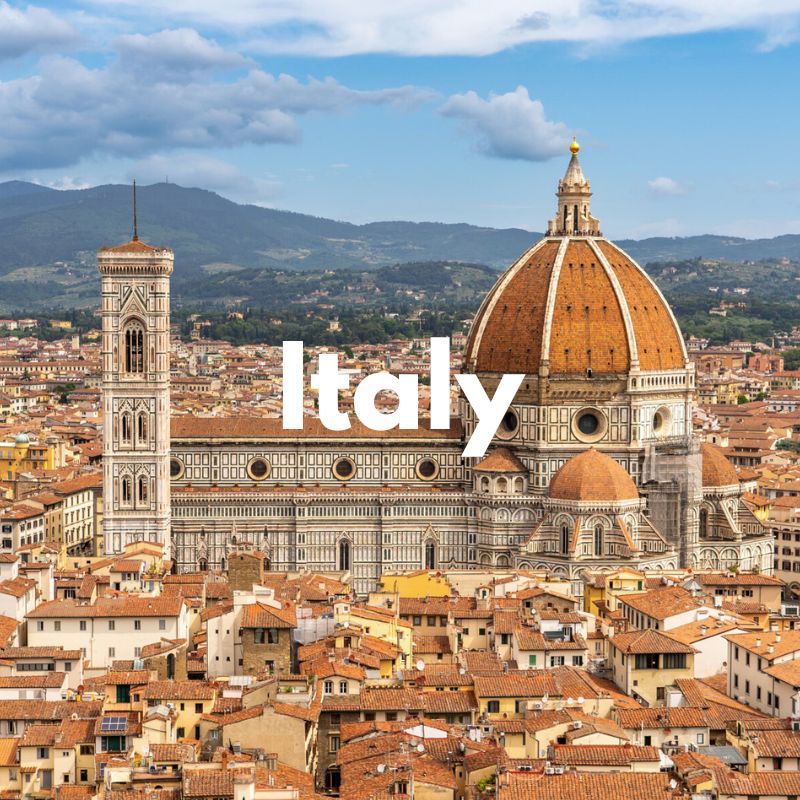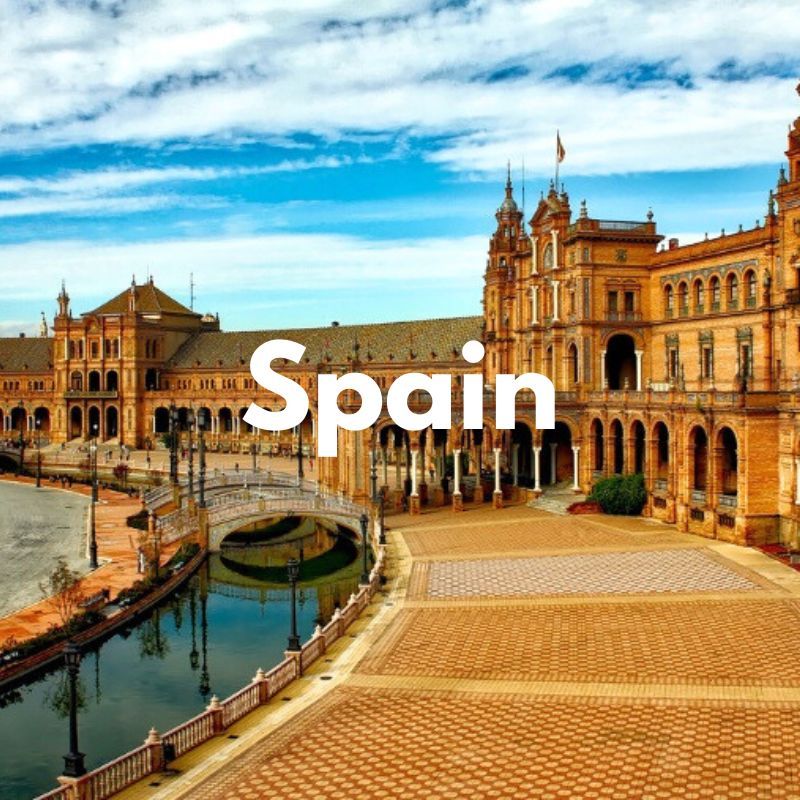France is one of those all encompassing travel destinations that has a bit of everything – mountains, beaches, countryside, big cities and quaint villages. Paris is the obvious bucket list place to go, but there’s so much more to see and do.
Mark grew up in England and must have been to France at least a dozen times before we went to Paris together for the first time in 2018. Since then we’ve done more Paris trips than we can count, and it’s become one of our favorite cities in the world.
We have close family living in Normandy so we’ve spent a lot of time around the D-Day Beaches and Mark completed an 11-day cycling expedition from Saint-Malo to Narbonne via La Rochelle, Bordeaux and Toulouse a few years ago. Oh, and we hiked around Mont Blanc using the Alpine resort of Chamonix as our hub. So we’re well versed on travel in this diverse country!
In this France travel guide we explain everything you need to know about planning a first trip, including where to go, itinerary, hotels, food and much more.
Note: This article may contains affiliate links. If you make a purchase using one of these affiliate links, we may earn a small commission at no extra cost to you.
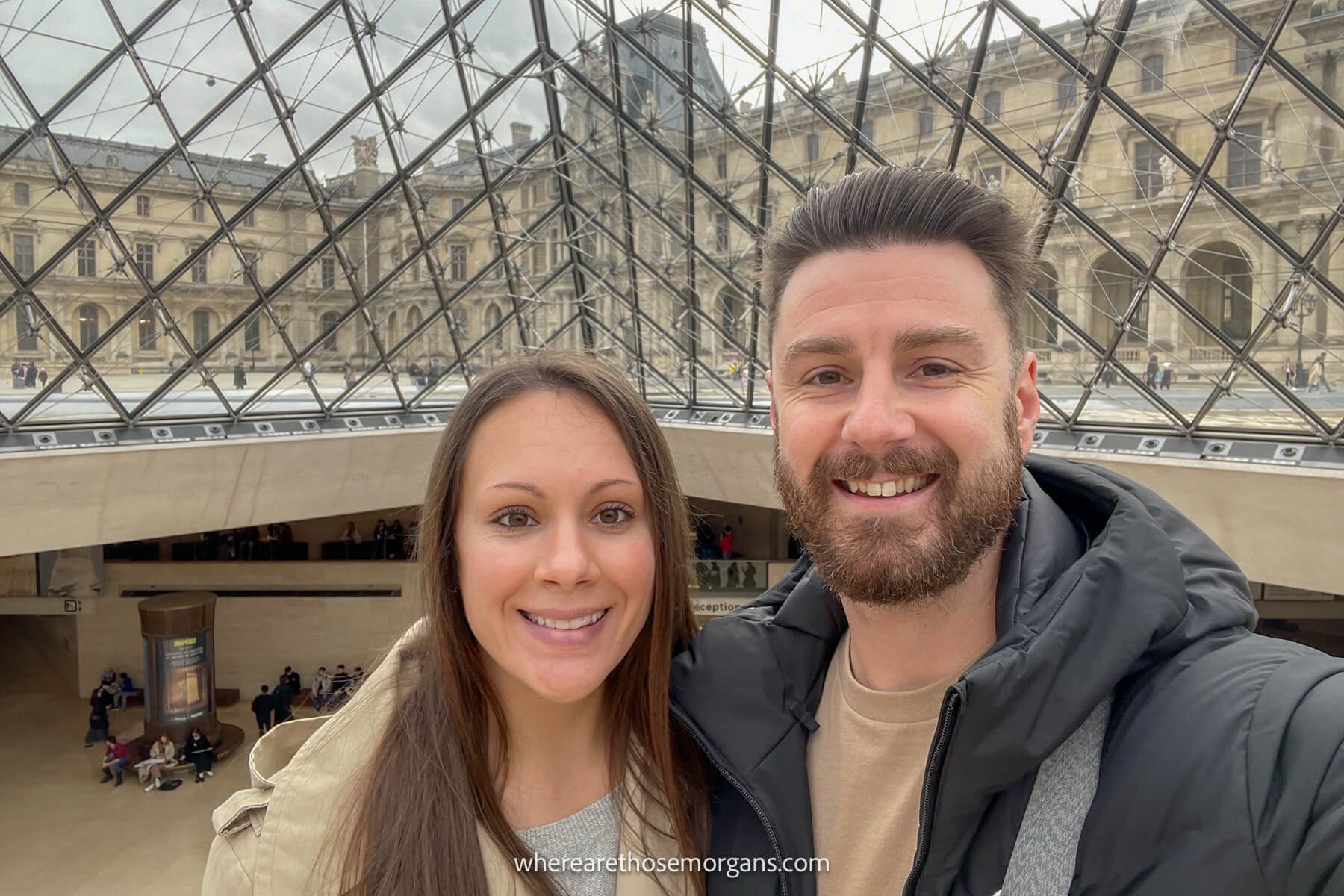
Places To Visit
Paris – We love visiting famous attractions like the Louvre and the Eiffel Tower, but to us Paris is all about world class shopping, incredible architecture, vibrant arrondissements, top-drawer food scene and excellent museums.
Versailles – The Palace of Versailles is one of the most popular day trips from Paris and we think it’s well worth doing. We spent half a day exploring the massive estate including the beautiful gardens and Queen’s Hamlet. Don’t miss it.
Mont St. Michel – One of France’s most iconic landmarks, the photogenic walled commune of Mont Saint Michel is unmissable if you’re planning to visit the northwest. We enjoyed walking up the twisting cobbled roads to the famous Abbey at its summit.
Normandy – A peaceful and rural part of the country with a not so peaceful history. This is where to tour the D-Day beaches and towns, visit the Bayeux Tapestry, see Rouen’s Gothic Cathedral, eat camembert cheese and drink cider.
Loire Valley – Following the banks of the Loire River from Angers to Orleans, this region is famous as a romantic escape with beautiful chateaus, quaint farms and lush vineyards. The entire area is a UNESCO World Heritage Site and it has a slow, relaxed vibe.
Bordeaux – Home to more than 300,000 acres of vineyards, Bordeaux is known as one of the most famous wine producing regions in the world. Mix wine tours with gardens, museums and walks along the Garonne for a relaxing break.
Dordogne – This lesser visited southwest region has medieval charm, impressive castles, and alluring landscapes. It’s also home to many prehistoric paintings inside caves which are considered to be among the best preserved in Europe.
Alsace – Located in the northeastern part of France on the Rhine River plain, Alsace is popular for wine tours, historical sites, gastronomy and top notch Christmas markets. Make sure you try the sauerkraut when you’re in town!
French Riviera – Also know as the Côte d’Azur, the French Riviera is located in the southeastern corner of France along the Mediterranean coastline. The most popular tourist destinations include Cannes, Nice, Monaco, St Tropez, Menton, Grasse and Villefranche-sur-Mer.
Top Experiences
Instead of looking at travel planning solely by which cities, towns or regions to visit, we like to know what experiences are worth doing when we visit new places. And France is overflowing with amazing experience-based things to do!
Here’s what we’d start with:
- Climb the Eiffel Tower
- Spend hours walking around the Louvre
- Visit the Palace of Versailles
- Explore arrondissements in Paris
- Visit the D-Day beaches (tour from Paris)
- Visit Mont St Michel (tour from Paris)
- Explore Loire Valley chateaus (tour from Paris)
- Take a wine tour in Bordeaux
- Visit the UNESCO fortress in Carcassonne
- Take a food tour in Lyon
- Enjoy stunning architecture in Avignon
- Go hiking in the Alps or Pyrenees
- Sit on a beach along the French Riviera
- Go to Christmas markets in Strasbourg
- Ski in one of many famous Alpine resorts
Need help planning your trip to Paris?
Skip the research and master Paris instantly with our expert guidebook. No fluff, just top experiences, custom itineraries, insider tips, our exclusive map and so much more.

Getting Around
France might be a huge country, but it’s really easy to get around. Most major airports in the country are served by various low-budget airlines so flying is an easy, quick and cheap option to cover the longest distances.
But our favorite way to get around is by train. France’s high-speed TGV trains are awesome, and even the regional trains are usually huge double-deckers with reasonable prices. We’ve done tons of train journeys in France and they’re always great experiences. Our only issue is a lack of storage when traveling with big suitcases.
It’s hard to say as a Brit when we invented the train but have a terrible setup with tiny trains that are always jam-packed, are never on time, take forever and cost a fortune – but France’s train network is fantastic, so don’t be afraid to travel on them.
In Paris, we always walk as much as possible because it’s the best way to see the city. But occasionally we have used the metro (here’s a metro map) which is extensive and affordable. The RER trains connect Paris with Orly and Charles de Gaulle airports, as well as Versailles.
Itinerary
There are so many ways to plan a first trip to France. It could be a quick highlights trip with just 2 days in Paris, a week in the Alps or a month traveling from top to bottom. So there’s no way we could create a one size fits all route for everyone.
But here’s how we’d plan a 4-week trip through France if it were our first time, knowing what we know now:
Paris – Days 1 to 4
- Do all the touristy things
- Walk around the arrondissements
Normandy – Days 5 to 8
- Visit Rouen cathedral
- See the Bayeux Tapestry
- Go to Omaha Beach
- Visit the war museums
- Walk up Mont St Michel
Loire Valley – Days 9 to 11
- Drive from Angers to Orleans
- Visit chateaus and wineries
Bordeaux – Days 12 to 13
- Take a wine tour near Bordeaux
- Have a quiet day in town
Toulouse – Days 14 to 15
- Drive to Bergerac
- Then down to Agen
- Follow the Canal du Midi to Toulouse
- Eat cassoulet
Carcassonne – Day 16
- Visit the famous fortress
Avignon – Day 17
- Visit the Palais des Papes
- Explore the lovely centre ville
French Riviera – Days 18 to 19
- Visit Saint-Tropez
- Then go to Cannes
- Stop in Nice
- And finally Monaco
Chamonix – Days 20 to 22
- Long drive to the Alps
- Cable car Aiguille du Midi
- Hike in the mountains
Lyon – Days 23 to 25
- Take a food tour
- Walk around the old town
- Visit the Basilica of Notre-Dame of Fourviere
Strasbourg – Days 26 to 28
- Stop in Colmar
- Sample Alsace wines
- Visit the Cathedral Notre Dame de Strasbourg
- Go to the Parc de l’Orangerie
- Walk around La Petite
This awesome itinerary stops at lots of France’s popular tourist highlights in a very efficient way. It’s exactly how we’d do it if we wanted to spend a month traveling around the country without crossing any borders.
Accommodation
Finding hotels and lodging throughout France is easy. We usually book through Booking.com because we have a long standing Genius rewards account and get great deals. But we’ll always check prices directly on the hotel website to see if they offer any perks like free breakfast or free parking.
Hotel prices in Paris are pretty high, as you might expect. We actually think it’s an affordable capital city to visit with the exception of hotels which have crushed a few of our travel budgets of the years! We’ve stayed in most of the popular Paris arrondissements and recommend either the 1st, 3rd, 6th, 7th or 18th for a first visit.
We also found hotels in Chamonix to be super expensive, and we know the Riviera isn’t a cheap place to visit either. Otherwise, most other places should be pretty reasonable for accommodation. At least similar to what you’d pay in the US, UK or Italy for instance.
Food
One of the biggest draws for a trip to France is its immense food and drinks scene. Mark loves a good beef bourguignon and Kristen doesn’t stop eating French onion soup when we’re in Paris. In the southwest we recommend cassoulet, and you can’t beat a croque monsieur for lunch.
Wait, what about pastries? Oh, you mean those incredibly light and fluffy croissants that we get totally addicted to and cause us to pile on 10 pounds every time we’re in France? Yes, they’re amazing. We love a low-key boulangerie for a cheap coffee and pan au chocolates at 7:00am with locals on their way to work. Or for a more classy experience, we like BO&MIE (a lot!).
When you book a hotel in Paris or anywhere else, look out for “petit dejeuner” which basically means breakfast. In our experience, mid-range hotels charge around 15-20 euros for a buffet style breakfast and they’re often not great. The best we’ve had in Paris was at Hotel des Arts in Montmartre because they had freshly made pastries from a local boulangerie.
If you’ve never done a food or wine tour before, France is a great place to break your duck. In Paris, we did an excellent macaroon making class like this one and took this fantastic wine tour in Les Caves du Louvre, but there are so many more top rated cooking classes you can try.
For a more authentic and immersive experience, you should leave Paris. Bordeaux is famed for wine, Champagne is the home of champagne, Normandy has tasty cider, and Lyon is the food capital of France.
When To Visit
France’s best weather is between May and September, so if you want warm sunny days you should plan to visit in peak months. Just remember, July and August draw the biggest crowds and highest hotel costs, especially in Paris.
We’ve been to France in all four seasons, and we think the shoulder season months of April, May, September and October are the best times of year to visit to benefit from a nice balance between costs, crowds and weather.
We did 8 days in Paris in November 2023 and while it was quieter and cheaper than usual, the weather was pretty dismal. Mark had to buy a new heavy coat because it was so cold! On the other hand, we did 4 days in Paris in July in 2024 and it was jam-packed everywhere. So what’s worse to you?
Tours
France is an amazing country to explore with tons of touristy spots and unique attractions. But many are hard to reach or require figuring out transport. That’s where tours might come in handy for your trip, if you just want someone else to do all the driving or explaining.
And similarly to Italy, we’d probably spend a bigger chunk of our travel budget on food and drink tours than anything else in France. It’s kind of what they’re famous for!
Here are some of the top rated tours we’d consider taking:
Keep Exploring
Are you planning a longer trip with stops in more European countries? Once you’re finished reading about France, keep exploring nearby areas by heading over to the following pages:
We hope our France travel guide helps with planning your trip!
Happy Travels,
Mark and Kristen
Enjoy this guide? Pin it for later!
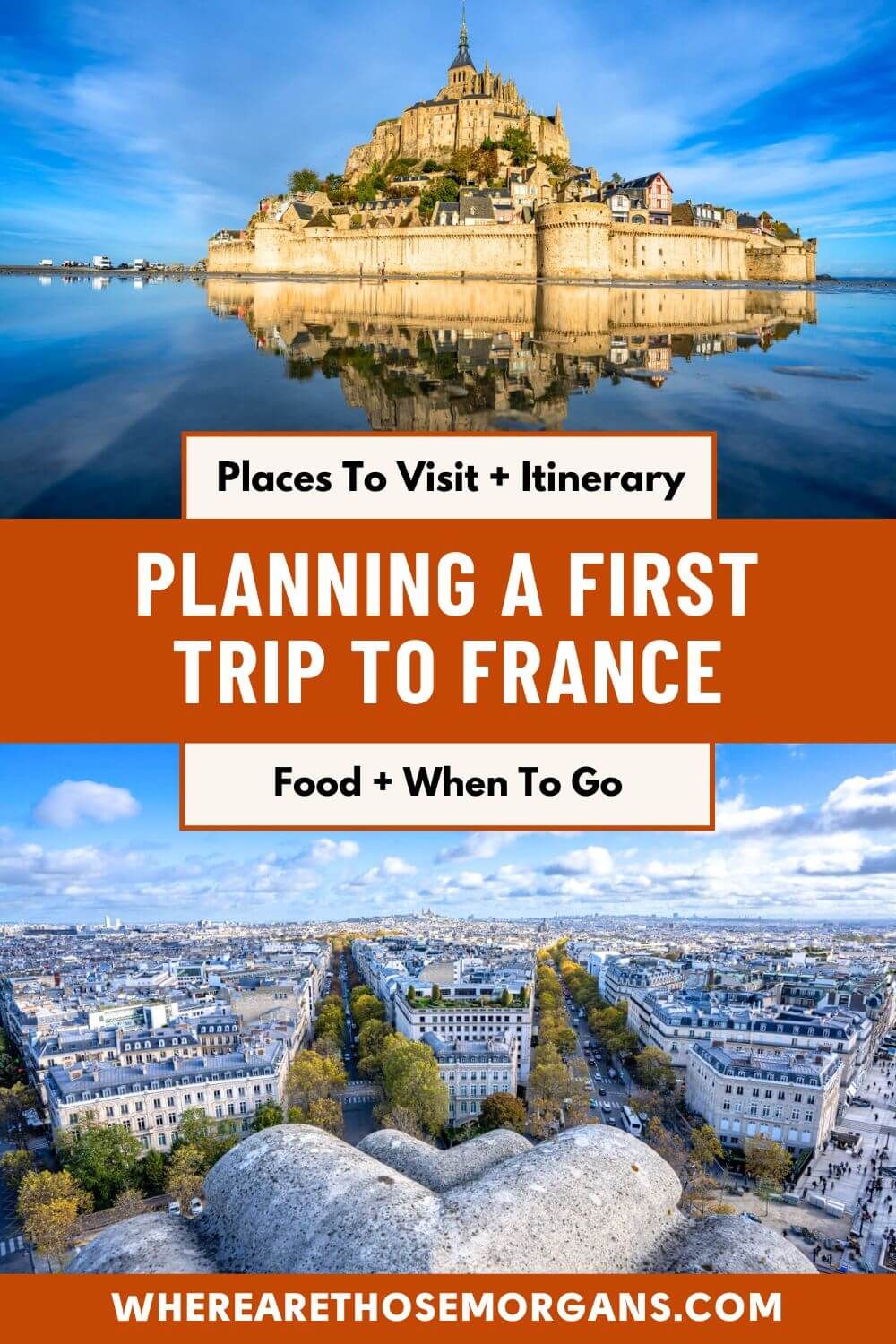
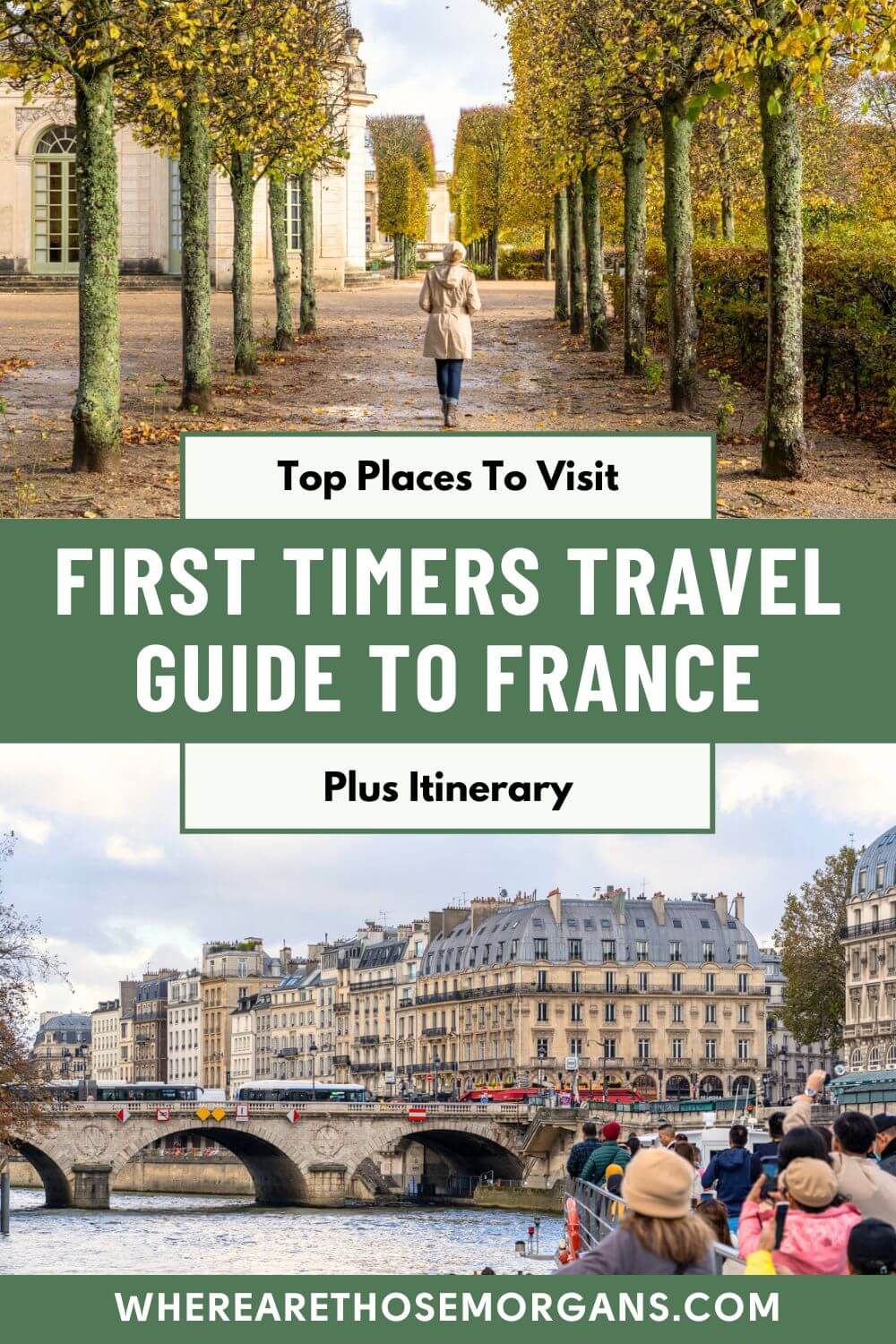
All Rights Reserved © Where Are Those Morgans, LLC. Republishing this article and/or any of its contents (text, photography, maps, graphics, etc.) in whole or in part is strictly prohibited.

